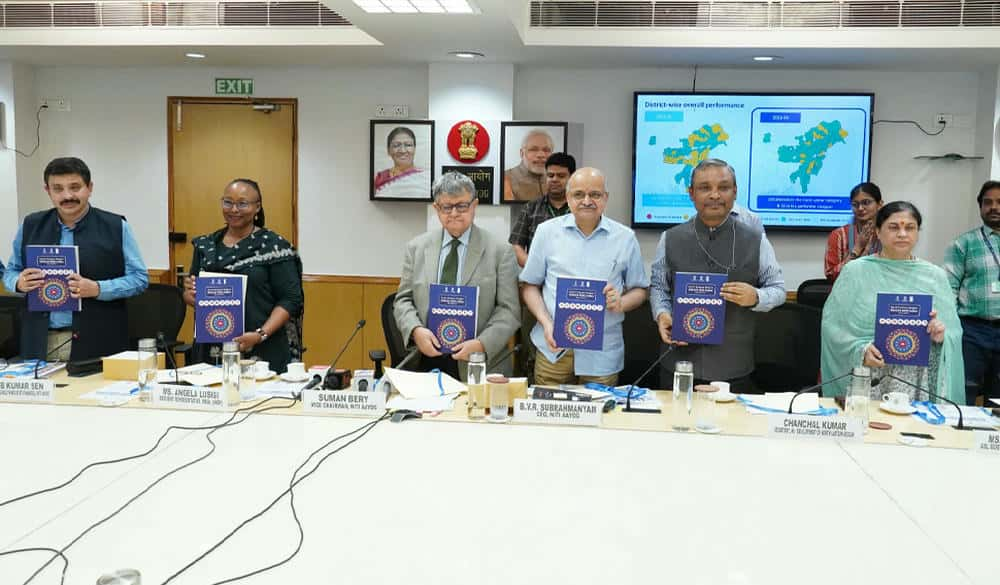Mizoram, Sikkim, Tripura lead as NITI Aayog’s NE District SDG Index shows 85% NE districts improved in 2023–24

In a significant development for the Northeast, NITI Aayog on Monday released the second edition of the North Eastern Region (NER) District Sustainable Development Goals (SDG) Index for 2023–24, showing that 85 per cent of districts across the eight northeastern states recorded an increase in their composite SDG scores.
The index, jointly developed by NITI Aayog and the Ministry of Development of North Eastern Region (MoDoNER), with technical support from the UNDP, maps the progress of 121 districts against key social, economic, and environmental development indicators aligned with the UN Sustainable Development Goals.
Among the major highlights, all districts in Mizoram, Sikkim, and Tripura achieved ‘Front Runner’ status, scoring between 65 and 99. No district in the region reached the ‘Achiever’ category (score of 100), and none fell into the lowest ‘Aspirant’ category (score below 50). The highest scoring district in the region was Hnahthial in Mizoram with 81.43, while Longding in Arunachal Pradesh registered the lowest at 58.71.
The report points to increased regional parity in development. Sikkim showed the most balanced performance, with just a 5.5-point spread between its highest (Gangtok, 76.64) and lowest (Gyalshing, 71.14) scoring districts. Tripura followed closely with a 6.5-point variation. In contrast, Nagaland and Mizoram, despite having high-performing districts, displayed larger intra-state disparities of 15.07 and 13.72 points respectively.
In Assam, Dibrugarh emerged as the best performer with a score of 74.29, while South Salmara-Mankachar stood lowest at 59.71. Other state-wise leaders include Lower Dibang Valley in Arunachal Pradesh, Imphal West in Manipur, East Khasi Hills in Meghalaya, Mokokchung in Nagaland, and Gomati in Tripura.
Launched in New Delhi by NITI Aayog Vice Chairman Suman Bery, CEO B.V.R. Subrahmanyam, MoDoNER Secretary Chanchal Kumar, and UNDP India Resident Representative Dr. Angela Lusigi, the 2023–24 index was hailed as a milestone in strengthening data-driven governance in the region. Programme Director (SDGs) Rajib Kumar Sen and other senior officials were also present at the launch.
Bery emphasised that achieving the SDGs by 2030 is crucial for India’s broader vision of Viksit Bharat @2047. He noted that the index would serve as a vital instrument for evidence-based planning, resource allocation, and monitoring, helping local governments accelerate targeted development.
The report attributes the region’s overall improvement to the combined impact of central flagship programmes and localised initiatives like the Aspirational Districts Programme. It also provides district-level insights and policy recommendations to further close performance gaps and ensure that no district is left behind on the road to sustainable and inclusive development.





Leave a Reply